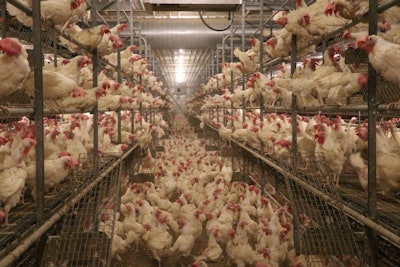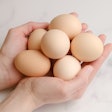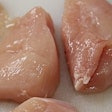
Two new studies put forward recommendations for improving the wellbeing of laying and meat chickens of all ages in the European Union (EU).
Among the recommendations made by the scientists following their review are an end to mutilation, feed restriction, and cage housing.
The review — by the European Food Safety Authority (EFSA) — also includes advice on space allowances, stocking density, lighting, noise, and structures such as elevated platforms.
In order to develop these recommendations, EFSA specialists assessed the various housing systems currently in use across the EU. In particular, they were looking for hazards and practices that could adversely impact bird welfare throughout the whole production cycle from breeding to production on the farm.
Finally, proposals are put forward to mitigate — even prevent — these negative consequences.
While these reviews were requested by the European Commission (EC), EFSA was asked to pay attention particularly to concerns that emerged in “End the Cage Age.” This was an initiative set up to address the concerns of the general public in the EU.
General recommendations for growing, breeding, laying poultry
Among the key proposals to emerge from the EFSA review was to avoid the use of cages for housing poultry.
Stocking density should be reduced so that the birds have sufficient space to perform natural behaviors. The review suggests that both covered outdoor areas (verandas) and the provision of friable litter encourage exploratory behavior, foraging, and dustbathing. Elevated platforms offer birds the opportunity to escape from another’s aggression, but they must allow all the birds to rest at the same time.
Finally, EFSA recommends that mutilations causing pain should be avoided where there is an alternative.
Specific advice for laying birds – egg layers and breeders
In the review, EFSA calls for the definition of protocols to measure welfare traits for all commercial genetic lines. For traits such as keel bone fractures and plumage condition, standard protocols will encourage breeding companies to make further progress in genetic selection, as well as enabling producers to compare strains less likely to develop these injuries.
Similarly, the review recommends the development of harmonized methods and scoring systems to monitor welfare on farms. Covering mortality, injuries, feather cover, keel bone fractures and carcass condemnation in the slaughterhouse, these tools would allow welfare to be assessed Europe-wide.
In order to phase out beak-trimming, EFSA calls for the implementation of all preventative measures.
For these birds, a covered veranda not only offers more space for the birds when they are most active. It also allows individuals to choose between environments. Additional space indoors provided inside the house would be an option for climate where a veranda is unsuitable.
A further suggestion arising from the review is rearing pullets with a dark brooder. A warm and dark rest area, this mimics some aspects of a mother hen, and helps to reduce fearfulness in the birds during rearing and laying, according to EFSA.
Also recommended is rearing pullets in a housing system that supports their navigational skills ahead of their transfer to laying accommodation.
In layer breeders, male aggression was identified as impacting on welfare of the females. This can be minimized, EFSA advises, by reducing the proportion of males in the flock, selecting less aggressive cockerels, and providing a partition for the females to escape from the males.
EFSA’s new recommendations for meat chickens
For broilers, EFSA has set 50g as the maximum limit for daily growth rate. It is also calling for a substantial increase in the space allowance for these birds.
With broilers and breeders, access to a covered veranda from two weeks of age is recommended, as well as to outdoor range with at least 70% vegetation coverage. Furthermore, houses for broilers should be fitted with ramps and elevated platforms, while broiler breeders should have access to perches for resting.
In the house, ammonia concentration should be less than 15ppm, while environmental lighting should be at least 20 lux.
EFSA is calling for an end to all forms of mutilations in broiler breeders, as well as the use of cages, and restriction of feed and water. Alternatives need to be developed to these practices, with Precision Livestock Farming technology having potential in these developments.
Instead of transporting day-old chicks, the review calls for fertilized eggs to be hatched on the farm.
At no time during incubation should eggshell temperature exceed 37.8C, EFSA recommends.
In future, EFSA wants to see on-farm total mortality, injured birds, carcass condemnations, and footpad dermatitis monitored at the slaughterhouse.
More on EU animal welfare legislation
In October of 2020, the “End the Cage Age” initiative was submitted to the EC having gathered almost 1.4 million signatures of support from EU citizens. Following a public hearing in the European Parliament in April of 2021, the initiative was debated in the same forum two months later.
The same day, a resolution was adopted supporting the initiative.
At the time, the European Commission undertook to propose this year legislation that would lead to the phasing out of the practice of caging farm animals by 2027. This was to cover pullets (young hens), among other poultry species, as well as rabbits.
Laying hens, broilers, sows, and calves had been included under the original review of EU cage-free transition.
EFSA has been developing these scientific opinions following a request from the EC with respect to its Farm to Fork (F2F) strategy.
Following the completion of EFSA’s reviews, a proposal on future legislation is scheduled by the EC in the second half of this year.
Under EU legislative process, the European Parliament and governments of all member states must agree to any such proposal. Individual countries are responsible for enforcing the rule.
Previously, EFSA experts have carried out similar reviews on the welfare of farmed pigs, as well as five on the impacts of transportation on different farm animals. Its scientists are currently focusing their attention on assessing welfare of farmed ducks, geese, quail, calves, and dairy cattle.


















